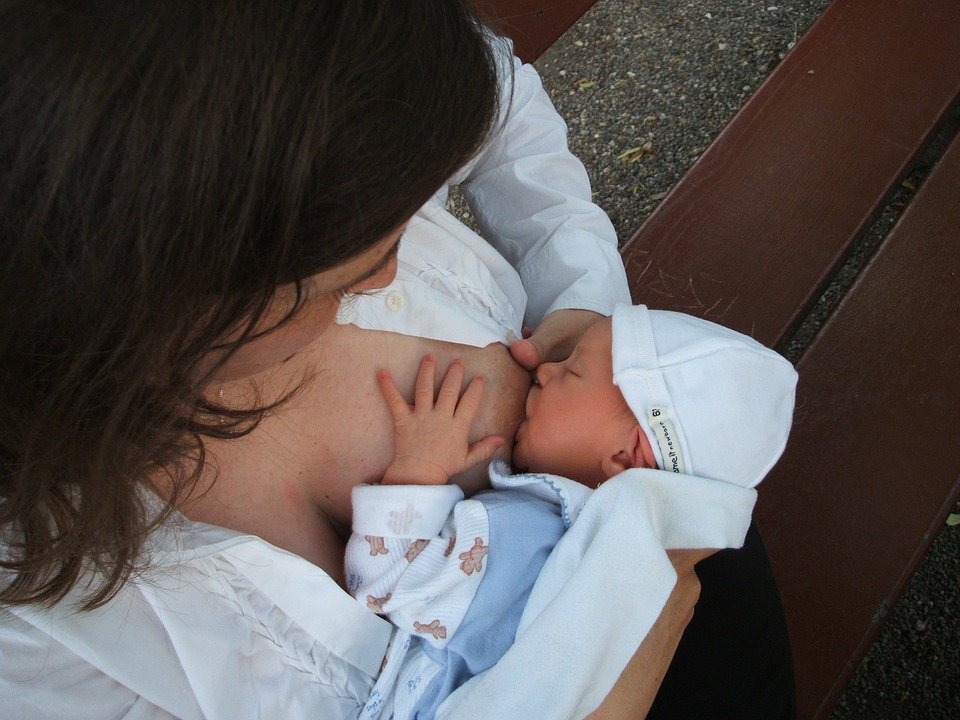Breastfeeding is one of the many joys of motherhood, but it does come with its own set of complications. One of the most common problems that new moms face when breastfeeding is that one of their breasts will produce more milk than the other.
This is a common problem that most women will face at one point or another. Thankfully, it doesn’t mean that there is anything wrong, and the problem can usually be corrected.
Finding Out Why One Breast Produces Less Milk
In order to solve the problem or see if there is a chance at solving the problem, you have to determine why one breast is producing more milk than the other.
Some of these problems can easily be corrected, but some of them cannot, such as ones that are simply due to anatomy.
Milk Is Produced According To Demand
This means that if you, or your baby, have a preference for one breast over the other, it will begin to produce more milk. The more baby nurses on one breast, the more milk it will produce.
The less favored breast will not begin producing more milk unless the baby nurses on it more. This is one of the most common reasons that one breast will produce more milk than another one.
One Breast Has Fewer Milk Ducts Than The Other
Sometimes, it’s just not in your anatomy to produce more milk. When one breast has fewer milk ducts than the other one, it’s perfectly normal that it will not produce as much milk.
You’ll notice that even when you pump it does not produce as much milk. Typically, following advice to increase your milk supply can help your breasts even out within a week or two in this situation.
Let Down Reflex Affects Preference
Let down reflex refers to how fast your milk comes out of the nipple. How many ducts you have that are working properly can affect this. This can also just be natural.
Some women have a slower milk flow in one breast than the other. This can lead to babies not wanting to nurse on that side, which quickly turns into that side producing less milk.
How To Produce More Milk
View in gallery
Now that you know why one breast is producing less milk than the other, it’s time to figure out how to produce more milk.
This will help make sure that your little one is getting plenty to eat, and it can even things out a bit so that your little one is not always nursing on one side.
Start Nursing On The Less Preferred Side First
If possible, start your baby out on the breast that produces less milk first. Babies typically will drink more from the first breast, which could be why one is producing more milk.
If you switch to the less preferred side, there’s a chance that your little one could drink more from that side, and then it will start producing more.
Pump The Side With Less Milk
Because milk is produced on supply and demand, you can create the illusion of higher demand by pumping the less preferred side to increase the milk supply.
Typically, you can begin producing more milk in just 5-7 days by pumping for an additional ten minutes after your little one is done feeding. If that isn’t enough, you can also try pumping the less full side for an extra 10 or 20 minutes per day.
The extra pumping, regardless of when you do it, will still make your body think that the demand for milk has gone up on that particular side. Then, it will begin producing more milk.
Avoid Common Methods Geared To Help Increase Your Overall Milk Supply
There are a ton of products on the market that can help increase your milk supply, such as supplements. Some of these even work! Dietary changes also work wonders.
However, these are not the route to take if you’re simply lopsided. These methods will increase the milk supply in both breasts.
The end result will be that one is producing enough, and the other is producing too much. You’ll still be lopsided, and probably painfully engorged in one breast.
Make Sure You’re Comfortable With Your Baby Nursing From Both Breasts
Sometimes, it’s not always the baby’s preference, it’s yours. Certain positions are simply more comfortable than others. If this is the case, try picking up a nursing pillow.
A boppy pillow can be used if you already have one, but these aren’t as comfortable as nursing pillows. My previous sister in law picked up one of these and swore by it. (She breastfed all three of her children, and used the same style nursing pillow for all three.)
- FEEL THE SUPPORT: Encourages better posture during breastfeeding, alleviating strain in your back, neck, and arms
- FIRM AND FLAT: Prevents baby from rolling out of position during nursing
- ONE HAND USE: Deluxe strap has velcro and silent release buckle for easy, one hand use and allows you to easily grab your maternity supplies within attached pouch
- WRAP AROUND DESIGN: Adjusts to fit most sizes, this pillow surrounds your body securely, for the ideal position
- PREFERRED BY THE PROS: My Brest Friend is proud to be the top choice of lactation consultants and birthing hospitals
Prices pulled from the Amazon Product Advertising API on:
Product prices and availability are accurate as of the date/time indicated and are subject to change. Any price and availability information displayed on [relevant Amazon Site(s), as applicable] at the time of purchase will apply to the purchase of this product.
Don’t Pump The Fuller Breast If You Can Avoid It
Having your baby nurse more on one side can lead to the other side becoming so full of milk that you have to express it.
However, pumping milk will mean that the fuller breast will continue to produce as much, if not more. Pumping it out will not help you balance out your milk supply. Instead, express or pump as little as possible, and only if you have to.
How To Get Your Baby Used To Nursing On The Other Breast
If your little one is the baby with the preference, it can be a bit harder to get them used to nurse on both breasts. They have already developed a preference, and most won’t want to change it.
However, there are a few things that you can do to get your little one used to the other breast as well. Once they have adjusted, they’ll continue to nurse on both breasts just fine!
View in gallery
Start Nursing When They’re Really Tired
If your little one is half asleep because they just woke up or it’s a nighttime feeding, they will instinctively nurse. (Babies are capable of nursing in their sleep.) This will help them adjust to nursing on the other side if they aren’t used to it.
Use The Same Position With Both Breasts
If you use a football hold with one, and your baby likes that, use a football hold with the other as well. When we switch positions, it can be uncomfortable for the baby.
The end result is that they develop a negative association with that breast and no longer want to breastfeed on that side, or they are simply uncomfortable. When babies are not comfortable, they don’t eat as well.
Make Sure Your Little One Is Being Soothed
Do whatever your baby finds soothing while breastfeeding if possible. This could be rocking, swaying, singing, etc. A darker room without a lot of noise is also ideal.
When your little one is feeling calm, they won’t give you as much trouble when it comes to feeding.
In Conclusion
It’s perfectly normal for one breast to produce more milk than the other. Usually, this isn’t a cause for concern.
However, if one breast is significantly larger than the other, you can use these tips to help balance them out a bit. You should see results in about one week!






